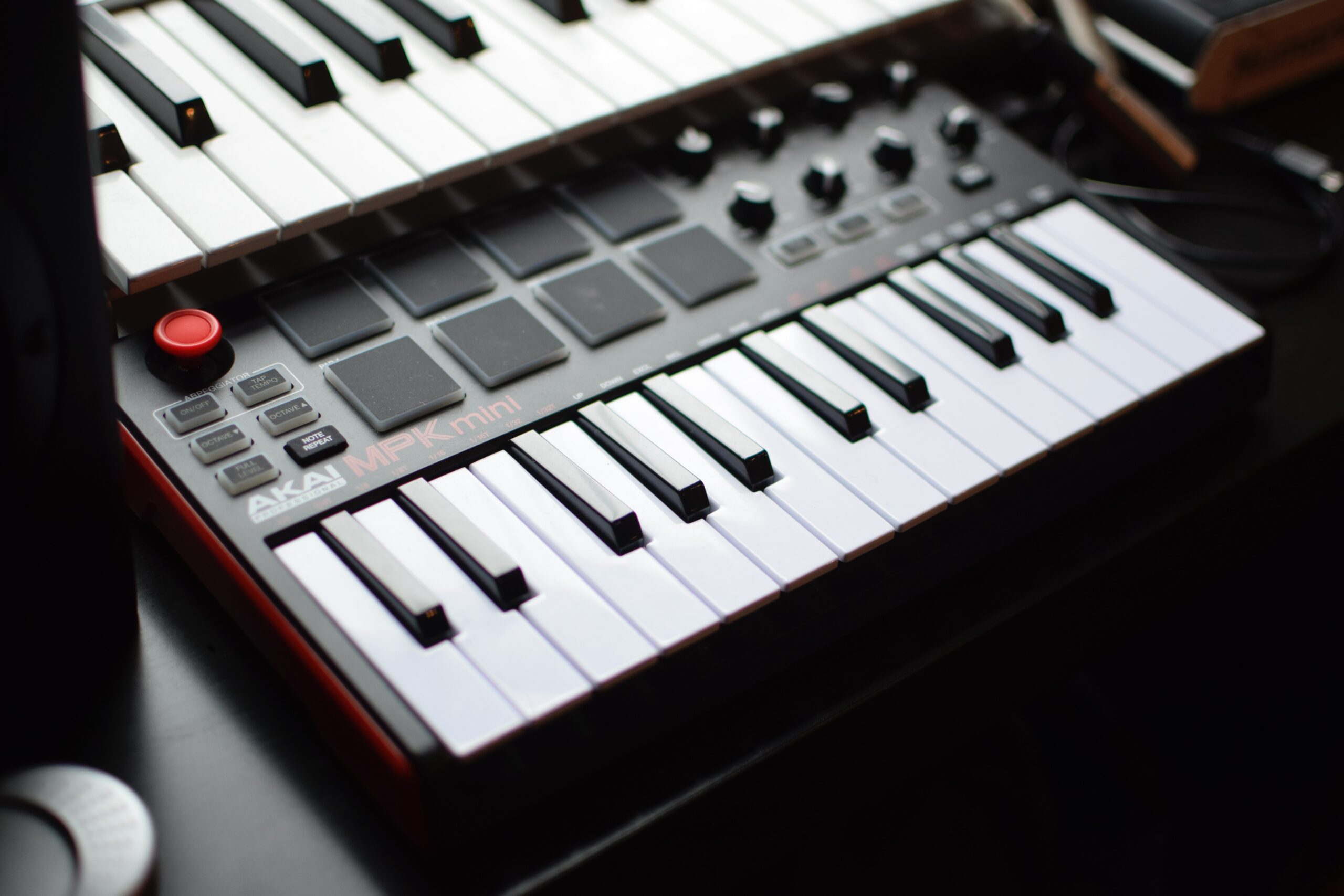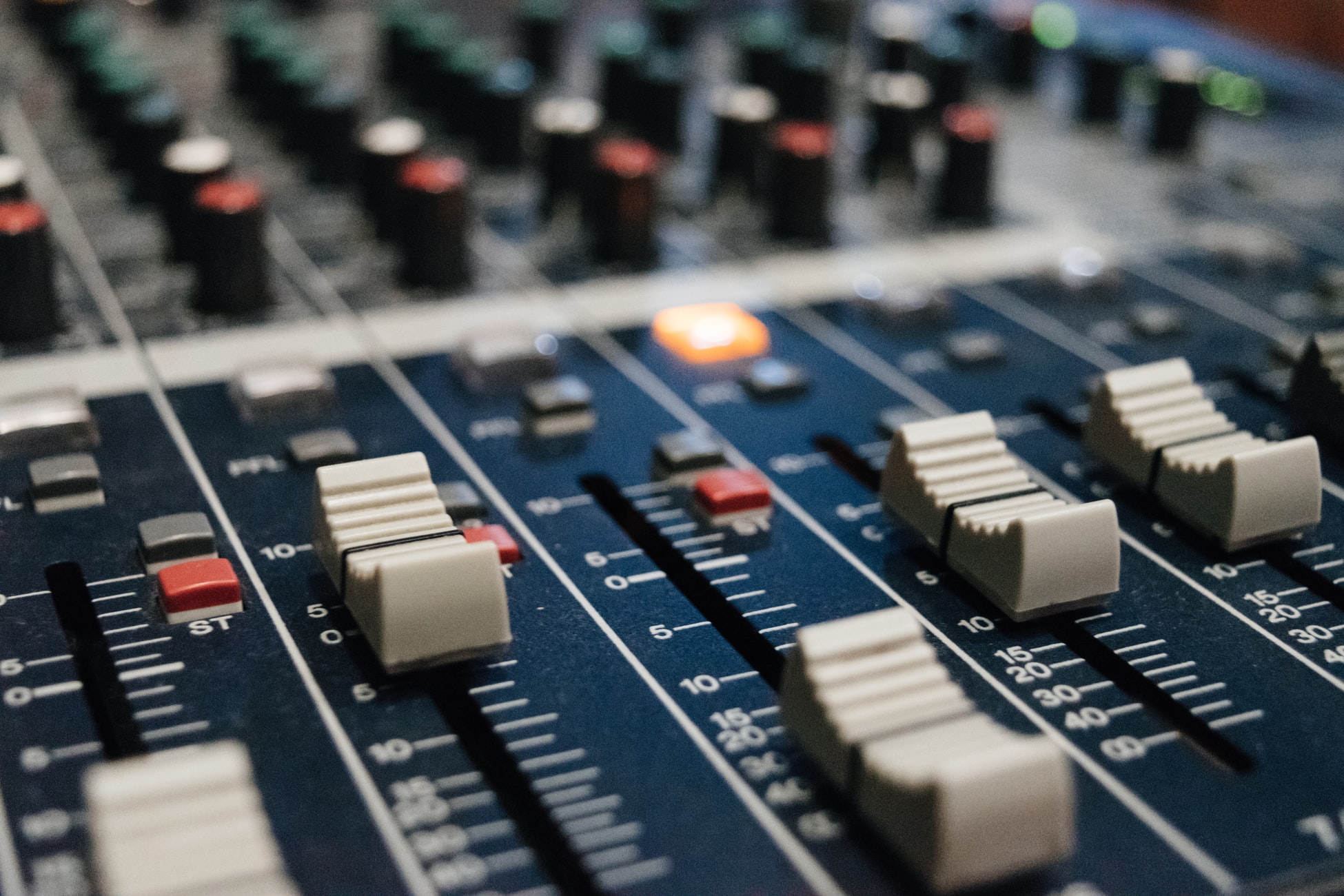So you want to control a DAW on your computer – or you want to control a hardware synthesizer that doesn’t have a keyboard.
In almost all cases, MIDI is the answer. There’s also an older form of external control for hardware synths called CV (control voltage) which provides pitch and gate info, but it’s less common these days.
What is MIDI?
MIDI (Musical Instrument Digital Interface) equipment is used for connecting musical instruments, controllers, and computers to enable communication between them. MIDI signals contain information about the notes, velocity, and other parameters of the music being played, allowing for precise control and manipulation of the sound.
To set up a MIDI system, you will need a few key pieces of equipment. First, you will need a MIDI controller, such as a keyboard or pad controller, which will be used to send MIDI signals to your other equipment. Next, you will need a MIDI interface, which will convert the MIDI signals from your controller into a format that can be understood by your computer or other devices.
You will also need a MIDI cable to connect your controller to your interface. MIDI cables are often labeled with “MIDI In” and “MIDI Out” to indicate the direction of the signal flow. Make sure to connect the “MIDI Out” port of your controller to the “MIDI In” port of your interface, and vice versa.
Finally, you will need software that can interpret and manipulate the MIDI signals being sent and received by your system. This could be a DAW (digital audio workstation) application like Logic Pro or GarageBand…or FL Studio, Ableton, or any number of others.
Once your MIDI system is set up, you can use it to control virtual instruments, record and manipulate MIDI data, and integrate hardware and software devices for a fully integrated music production workflow.
MIDI for hardware synths
To control a hardware synthesizer with MIDI, you will need to connect a MIDI controller to the synth via a MIDI cable. Once connected, you can use the controller to send MIDI signals to the synth, triggering notes and controlling various parameters such as filter cutoff, envelope settings, and effects. Many hardware synths have dedicated MIDI inputs and outputs, allowing for seamless integration with MIDI controllers and other devices. By using MIDI to control your hardware synth, you can take advantage of the precise control and flexibility that MIDI offers, allowing for more creative and expressive musical performances.
Types of MIDI connections
There are three types of MIDI cables available: 5-pin DIN, USB, and MIDI-over-ethernet (MoE).
5-pin DIN cables are the traditional standard for MIDI connectivity, and are still widely used in music production today. They are durable, reliable, and can transmit MIDI signals over long distances without any loss of data. They’re chunky cables with large connection ports, but they’re supported across virtually all professional synths and controllers.
USB cables are a newer development. They allow for MIDI signals to be transmitted over USB connections, making them a popular choice for connecting MIDI controllers and other devices to computers. They are often faster and more convenient than 5-pin DIN cables, and can also provide power to devices that support USB power. They aren’t universally available across all synths, though – especially older vintage analog synthesizers which are so favored in the audio production world.
MIDI-over-ethernet (MoE) cables are a newer development that allow for MIDI signals to be transmitted over an Ethernet network. This enables musicians to connect multiple MIDI devices across different locations, making it ideal for large-scale performances or remote collaborations. In most cases, these aren’t going to be relevant for your needs.
Ultimately, the choice of MIDI cable will depend on the specific needs of the user, including the types of devices being used, the distance between devices, and the desired level of convenience and flexibility.
Retrofitting older synths with MIDI
In most cases, it is possible to convert older synths to support MIDI, although the process can vary depending on the specific synth and the desired level of MIDI integration.
One common method is to use a MIDI retrofit kit, which typically includes a circuit board and wiring that can be installed inside the synth. These kits can range from basic MIDI interfaces that allow for simple note triggering to more advanced systems that provide full MIDI control over the synth’s parameters.
Another option is to use a MIDI-to-CV (control voltage) converter, which can convert MIDI signals into the analog control voltages used by older synths. This method can be less expensive and less invasive than a retrofit kit, but may be limited in terms of the level of control it provides.



